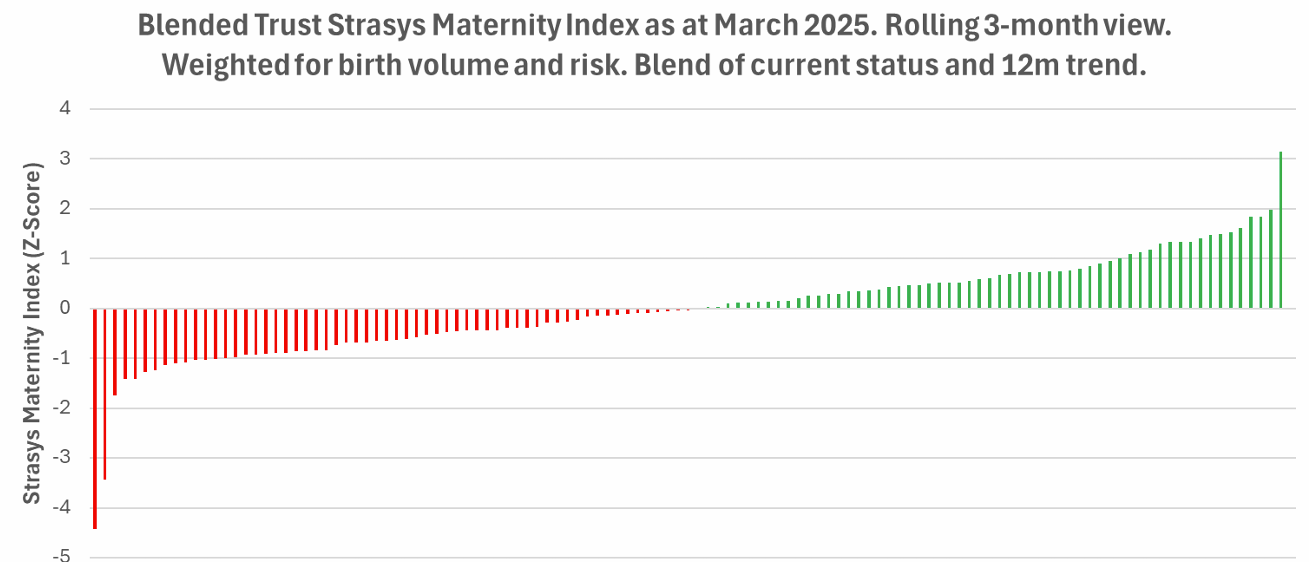The Strasys Maternity Index (SMI) is a new way to track and understand maternity risk across NHS Trusts in England. Using 58 different measures from national maternity data, the Index helps identify where risks are highest- based not just on current performance, but also on how things are changing over time.
What the Index Measures
The SMI looks at three key things:
- Current performance – how a Trust is doing now, based on clinical, safety, and outcome indicators relative to all England trusts providing maternity services.
- 12-month trend – whether things are improving, static or deteriorating.
- Birth volume – how many people are affected, based on the number of births at each Trust.
The final score combines all three- giving the clearest picture of maternity risk by quality, trend and scale.
What the Data Shows
The Index highlights two large-volume trusts that stand out as being of particular concern. One Trust in particular combined a high number of births, a top-five risk score, and a clear 12-month decline in key clinical areas such as neonatal health (Apgar scores), post-partum haemorrhages, and perineal trauma.
At the other end of the spectrum, Homerton Healthcare appears to have a substantial lead over other trusts in the low risk it poses to the system relative to the high volume of births managed by that trust.

How the Score Is Calculated
Each Trust’s score is built using:
- Z-Score comparison to normalise individual metrics across England.
- A weighting system that gives greater importance to risk factors and measures of higher clinical concern.
- Measures averaged over rolling periods to reduce impact of outlier months, and measures disregarded where low volumes could distort findings.
- A trend analysis using 12 months of data to see if things are getting better or worse.
Why Volume Matters
Some Trusts have high risk scores but serve very few patients. To focus on system-wide risk, the Index adjusts for birth volume, showing which Trusts present the greatest risk to overall patient safety based on how many people they serve.
Why This Matters
The SMI gives leaders a clear, data-driven view of where maternity risks lie, how they’re changing, and how many people are likely to be affected. It’s designed to support smarter decision-making – helping the NHS focus on where action is most needed.





